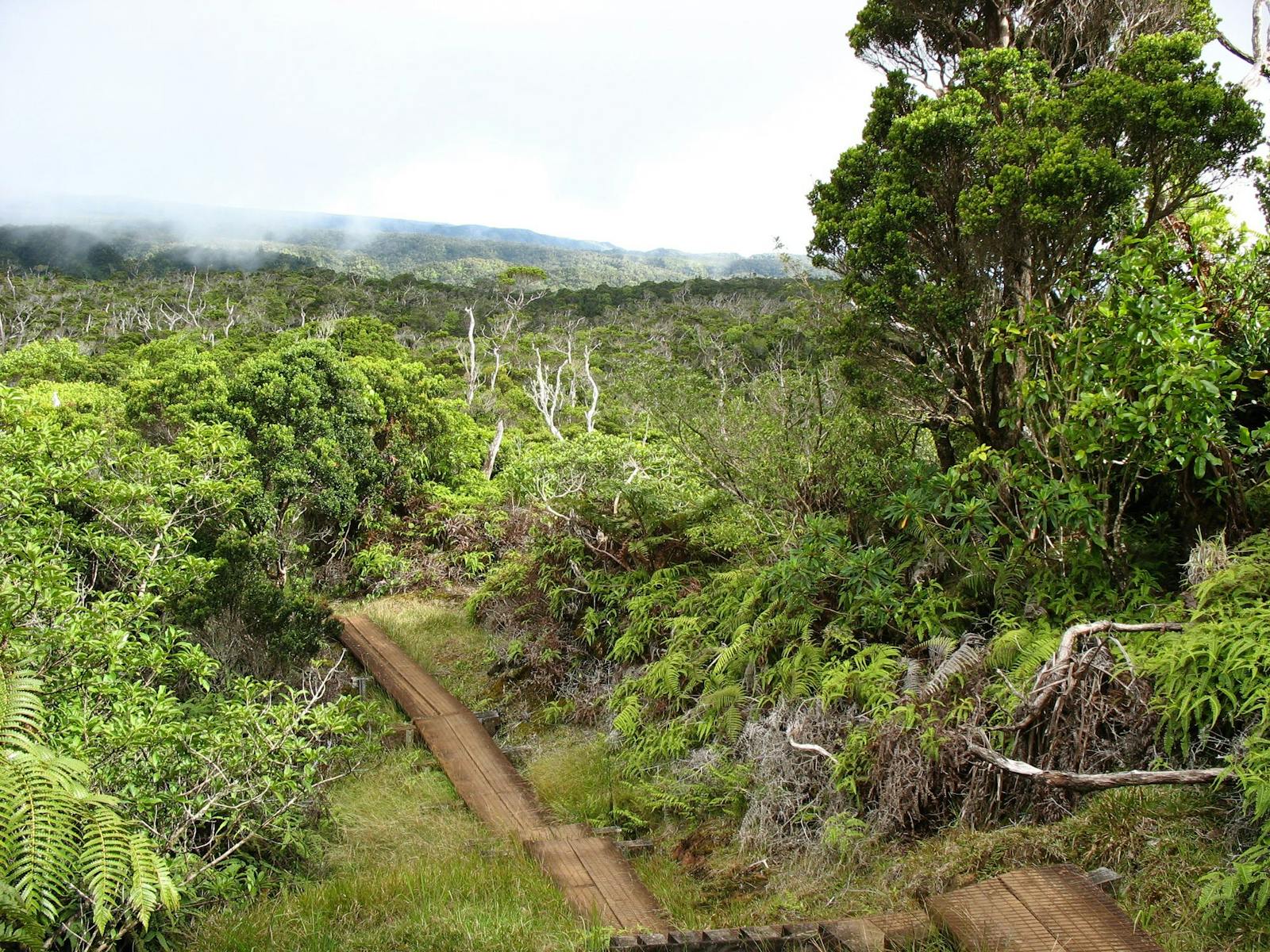Hawai'I Tropical Moist Forests
The ecoregion’s land area is provided in units of 1,000 hectares. The conservation target is the Global Safety Net (GSN1) area for the given ecoregion. The protection level indicates the percentage of the GSN goal that is currently protected on a scale of 0-10. N/A means data is not available at this time.
Bioregion: Hawai’i Tropical Islands (OC11)
Realm: Oceania
Ecoregion Size (1000 ha):
675
Ecoregion ID:
623
Conservation Target:
78%
Protection Level:
2
States: United States
What does a forest without ants look like? Hawai’ian rainforests evolved without them as they never arrived on this remotest of archipelagos. The few plants and animals that were able to travel across the ocean to these islands subsequently radiated into diverse forms and unique species—from fruit flies and land snails to honeyeaters, tarweeds, and daisies. Gnarled Ohi’a lehua (Metrosideros polymorpha) with their sprays of red flowers being visited by the I’iwi, also known as the scarlet honeycreeper, are an iconic image of these unique forests.
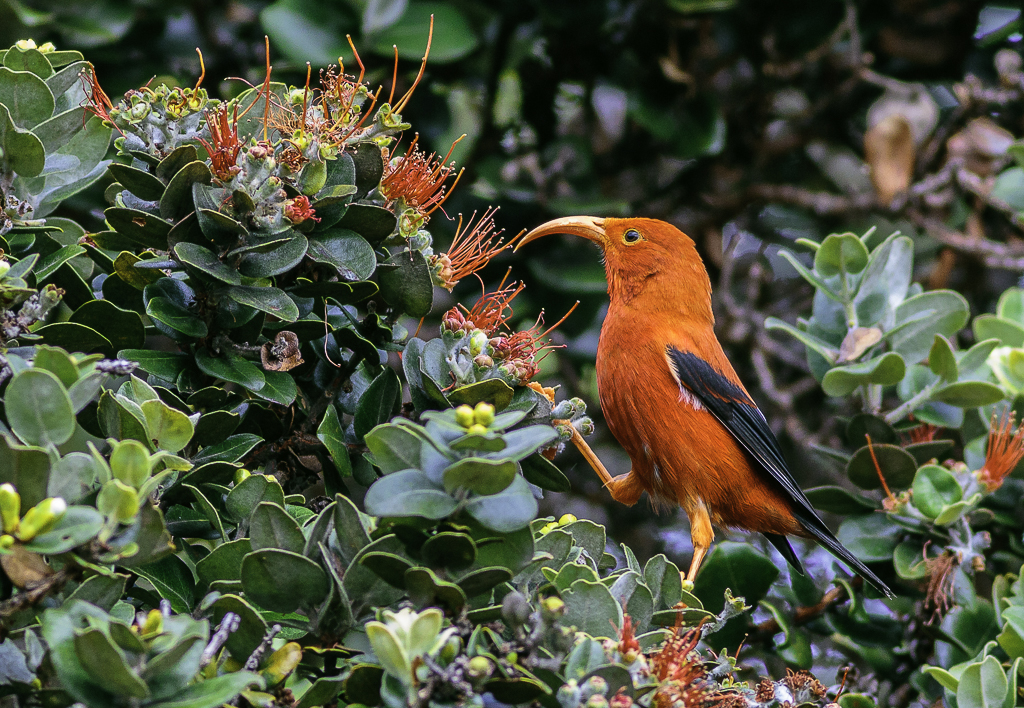
The flagship species of the Hawai'I Tropical Moist Forests ecoregion is the I’iwi. Image credit: Creative Commons
Tropical moist forests of Hawai'i occur as mixed mesic forests (about 750–1,250 m elevation), rain forests (found above mixed mesic forests up to 1,700 m), wet shrublands, and bogs in swampy areas. Moist to wet forests are commonly found on the windward lowland and montane areas of the larger islands and on mountain tops of some of the smaller islands. Forty-eight different forests types have been recognized for the islands as a whole.
Native trees number 175, with most unique to the islands. Koa (Acacia koa) and ‘Ohi’a lehua are often the dominant canopy tree species in the moist forests. In montane areas with high rainfall, one finds ‘Ohi’a lehua with other wet forest tree species such as Cheirodendron, Ilex, Antidesma, Melicope, Syzygium, Myrsine, Psychotria, and Tetraplasandra. Loulu fan palms (Pritchardia spp.) may rise into the canopy.
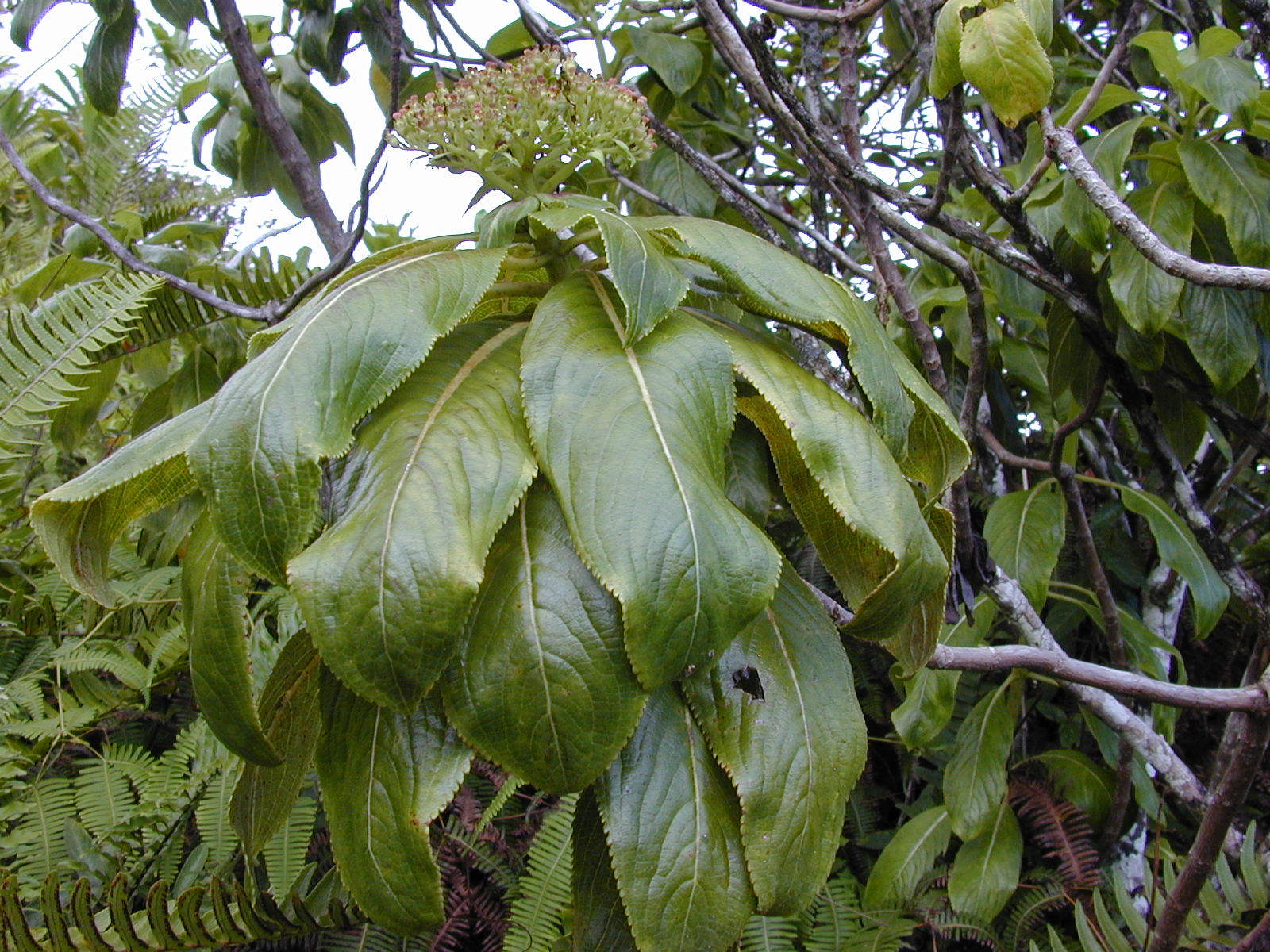
Broussaisia arguta. Image credit: Creative Commons
Tree ferns (Cibotium spp.) and diverse shrubs and epiphytic plants cover the forest floor and tree surfaces. Common understory plant genera are Clermontia, Cyanea, Gunnera, Labordia, Broussaisia, Vaccinium, Phyllostegia, and Peperomia. Bogs may be present on montane plateaus or depressions and support sedges, grasses, ferns, mosses, small trees, and shrubs that form irregular hummocks.
Over 110 birds once inhabited Hawai’ian moist forests, though only 48 remain. The honeyeaters, in particular, underwent explosive radiation into many different forms (50 species) from a single finch ancestor. This endemic group of birds displays many specialized adaptations to different food and plant resources. Other birds include the Hawai’ian hawk, Hawai’ian crow, and Hawai’ian thrushes. Fruit flies and landsnails (for example, Achatinella, Carelia) also diversified into many species. Without ants, some invertebrates evolved to behave in unusual ways, such as the moth caterpillars in the Geometridae family that prey on other insects.
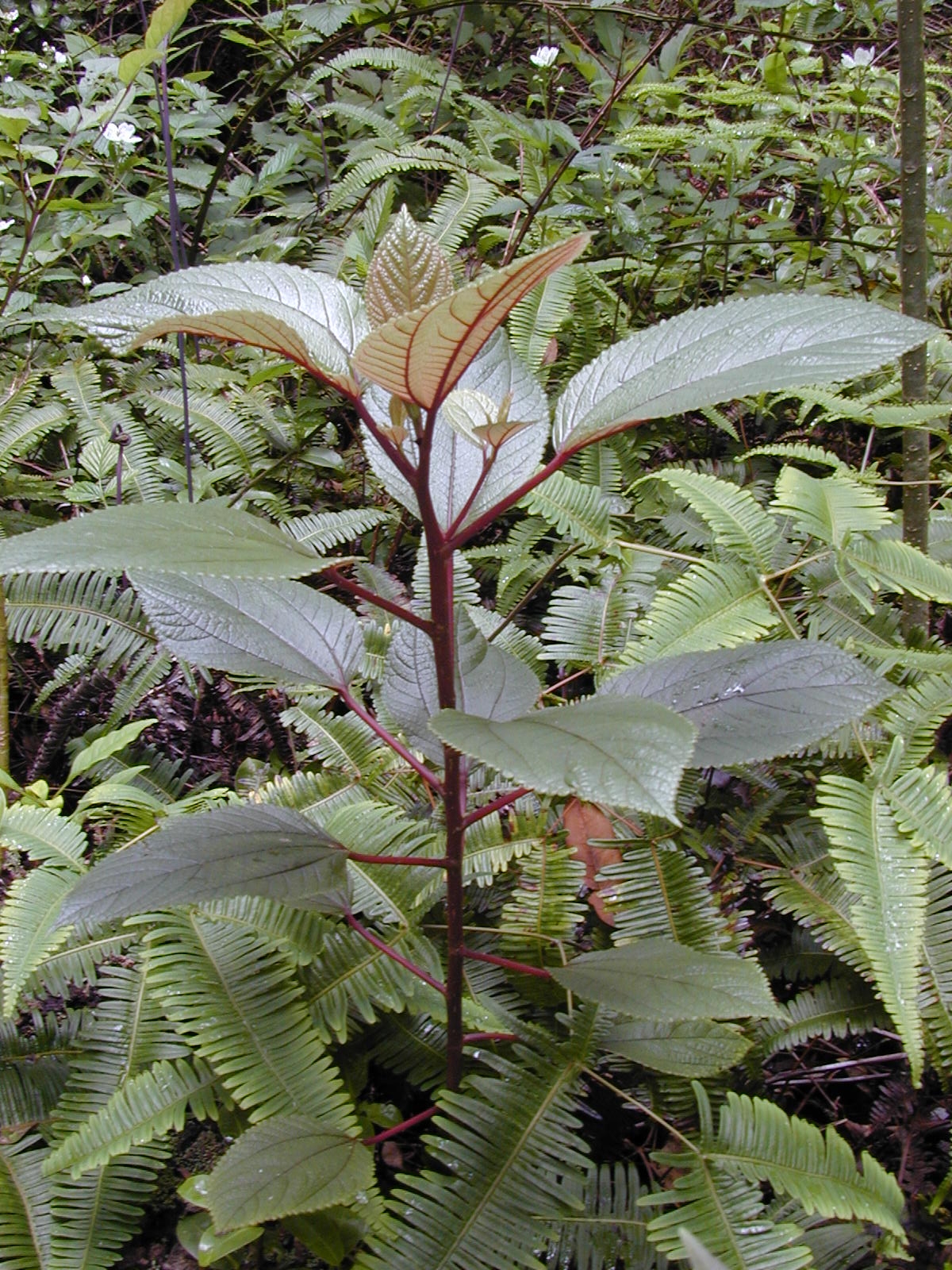
Pipturus albidus. Image credit: Creative Commons
Lowland and foothill moist forests have been largely eliminated. Some relatively large blocks of montane forest occur on the larger islands, though there is much degradation from feral ungulates, development, and recreational activities in some areas. Introduced weed and tree species, avian malaria, invasive ants, rats, frogs, toads, pigs, goats, and cats all alter native habitats and harm threatened wildlife populations.
Some good examples of moist forest are protected within Hawai’i Volcanoes National Park, on several forest reserves and wildlife refuges on the slopes of Mauna Kea and Mauna Loa of the island of Hawai’i, Haleakala National Park and adjacent forest reserves, as well as in West Maui, Kaua’i, Moloka’I, and O’ahu.
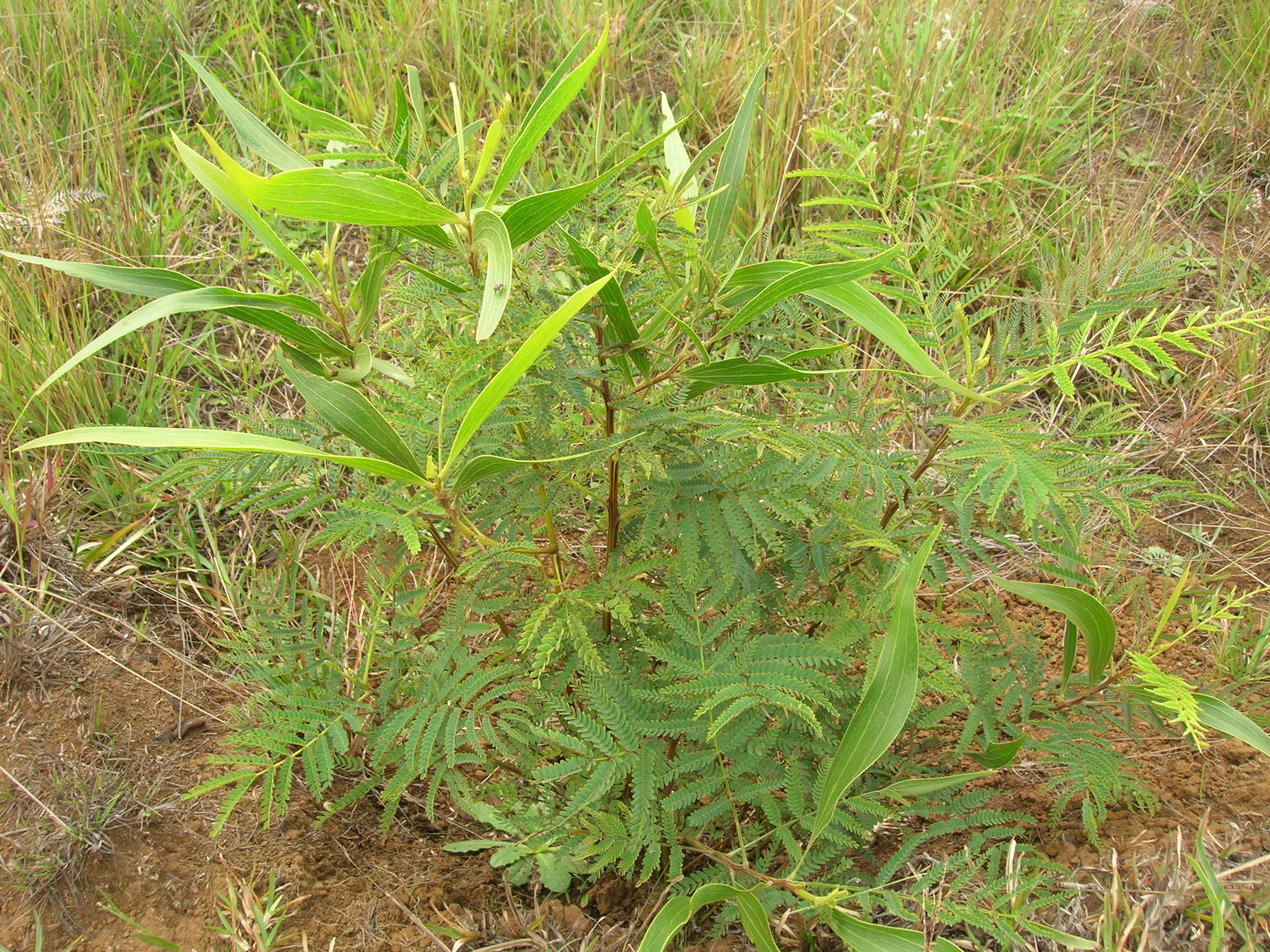
Juvenile acacia koa. Image credit: Creative Commons
The priority conservation actions for the next decade are to: 1) strengthen protection and invasive control on key forest blocks, such as Wai'anae Mountains of O'ahu, East Moloka'i Mountains, West Maui Mountains, Windward East Maui, Lana'ihale of Lana'I, the Kohala Mountains, Hamakua-Hilo subregion, and the Kona subregion of Hawai'I; 2) provide intensive control of feral animals and alien plants at Kauai Summit, the Koulau block, the East Moloka’i block, the West Maui block, Ka’u, Hawai’i block, East Maui Watershed Partnership, Hakalau NWR, and Havo National Park; and 3) ensure intensive quarantine and control efforts of the invasive little fire ant (Wasmannia auropunctata) to prevent its spread to islands where it does not yet occur.
Citations
- Barbour MG, WD Billings. 2000. North American Terrestrial Vegetationhttps://books.google.com/books?id=Ra2QzAh9xdIC (2 ed). Cambridge University Press https://en.wikipedia.org/wiki/Cambridge_University_Press, Cambridge.
- *CEPF. 2007. Ecosystem Profile: Polynesia/Micronesia Biodiversity Hotspot. Critical Ecosystem Partnership Fund, Washington, DC.
- Cowie RH. 1992. Evolution and extinction of Partulidae, endemic Pacific island land snails. Philosophical Transactions of the Royal Society of London Biological Sciences 335:167-191.
- Gon S, D Olson. 2018. Hawai’i Tropical Moist Forests. Accessed 1 June 2018 at https://www.worldwildlife.org/ecoregions/oc0106https://www.worldwildlife.org/ecoregions/oc0106.
- Kay EA. 1995. A Natural History of the Hawaiian Islands: Selected Readings IIhttps://books.google.com/books?id=SFLoKRq-joEC. University of Hawai’i Press https://en.wikipedia.org/wiki/University_of_Hawaii_Press, Honolulu. pp. 147.

